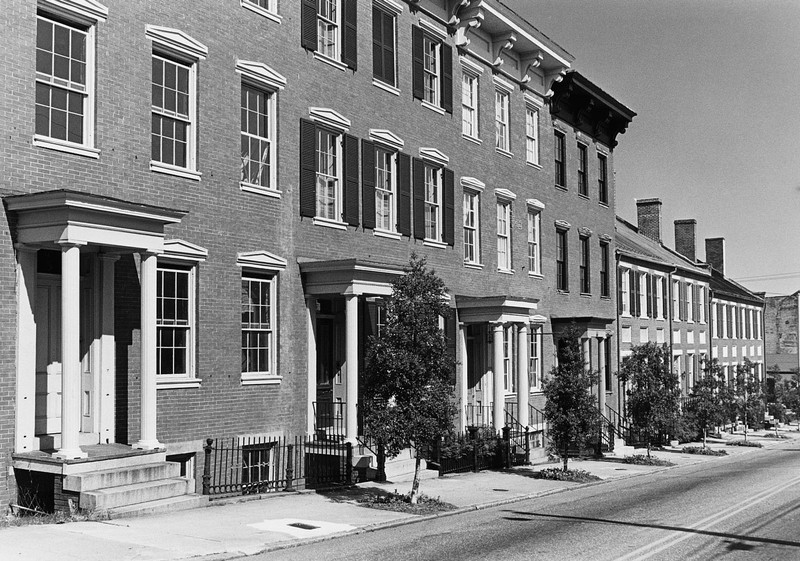High Street Residences
Introduction
Text-to-speech Audio
Images
Sample of High Street Residences

Backstory and Context
Text-to-speech Audio
Smith’s Row takes its name from John H. Smith, an Irishman, who purchased the ground on which the house stands in 1834 and was built between 1834 and 1838. Smith, a veteran of the Petersburg Volunteers in the War of 1812, was a substantial stockholder in railroad companies and had substantial investments in various manufacturing enterprises in Petersburg. Among the residents of Smith’s Row have been Pleasants C. Osborne, a cashier of the Petersburg Branch of the Farmers Bank and Charles Jackson Pannill who in 1906 sent the first wireless message across the Atlantic Ocean from Massachusetts to Scotland.
May’s Row takes its name from its builder David May, a prominent attorney described by Rev. Philip Slaughter as “counsellor of the widow, the orphan, and the poor, and peacemaker.” He was married to the daughter of John Pegram, major-general with the Virginia forces in the War of 1812 and Member of Congress. Three of his sons gave their lives during the Civil War, two of them at the second Battle of Manassas.
High Street lies in the area annexed to Petersburg in the late 18th century. Virtually every late 18th- and early 19th-century style of architecture popular in the United States is represented in the district. Noteworthy examples include the Strachan-Harrison house (302 Cross Street, mid- to late 18th century), the John F. Clay house (244 High Street, Federal, ca. 1810), six late Georgian/early Federal houses on High Street (265, 311, 320, 416, 545, and 614), and a fine collection of 1 ½ -story worker houses dating to the first quarter of the 19th century. A four-block area on High Street contains a rich mixture of 19th-century architecture including representatives of late Georgian, Federal, Greek Revival, Italianate, Second Empire, Romanesque Revival, Queen Anne, and Colonial/Georgian Revival styles.
Sources
Hale, Thomas F. and Bailey, James H. Old Petersburg: Old Houses and Neighborhoods in Petersburg, Virginia. Richmond, VA: Hale Publishing, 1977.
